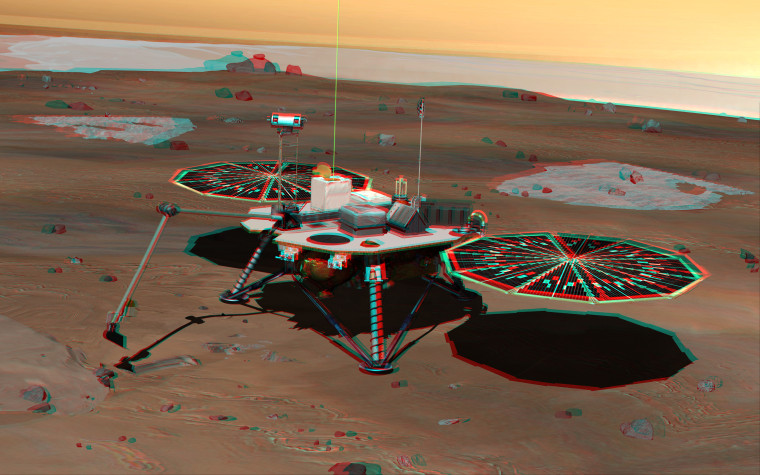Time to whip out those red-blue glasses: Phoenix Mars Lander, which touched down on the Red Planet, is already sending back black-and-white images in stereo. If you're set up with 3-D specs - and who isn't? - it's the next best thing to being there.
The first images stay relatively close to home, revealing what's right in front of the lander.
One widely distributed picture shows one of the lander's three legs extending down to the surface, with disturbed soil and pebbles surrounding it. (Here are versions from Kevin Baird's Flickr collection, The Martian Chronicles blog and Mars Unearthed. Baird also offers a video blog post tracing the process.)
Another stereo photo, showing shadows and rocks around the lander, is available from the Phoenix Web site at the University of Arizona. The rough-cut picture looks stretched out because it's designed for cylindrical-perspective projection, suitable for viewing as a partial 360-degree panorama. (Here's a nicer detail shot from HazyHills.com.)
This is just the start of what should be a fine collection of anaglyphs - that is, two-toned images that are designed for easy viewing through cheap 3-D glasses. What's that? You don't have your red-blue glasses yet? They're ridiculously easy to find at novelty stores or on the Web. You can even make your own glasses - and if you're feeling adventurous, you can take the spacecraft stereo pairs and create your own 3-D pictures.
Phoenix isn't the first Mars probe to send back stereo pairs. HazyHills offers about 70 stereo pairs from the Spirit and Opportunity rovers, while Mars Unearthed has scores of lovely anaglyphs from the rovers as well as from Mars Reconnaissance Orbiter, Mars Global Surveyor and Mars Express. Michael Lyle has automated the process for creating 3-D versions of rover imagery, often with impressive (if not exactly user-friendly) results.
Looking for more 3-D thrills? Check out this NASA page, which brings together more than 200 anaglyphs from space missions ranging from the Saturn-orbiting Cassini probe to the sun-watching (and aptly named) STEREO satellite. Comet Wild 2 looks like it's coming straight for you in this 3-D picture from the Stardust probe, created by Calvin Hamilton.
An expanded version of this report was published as a .
